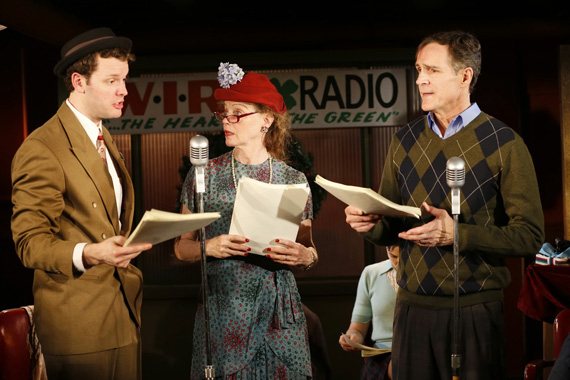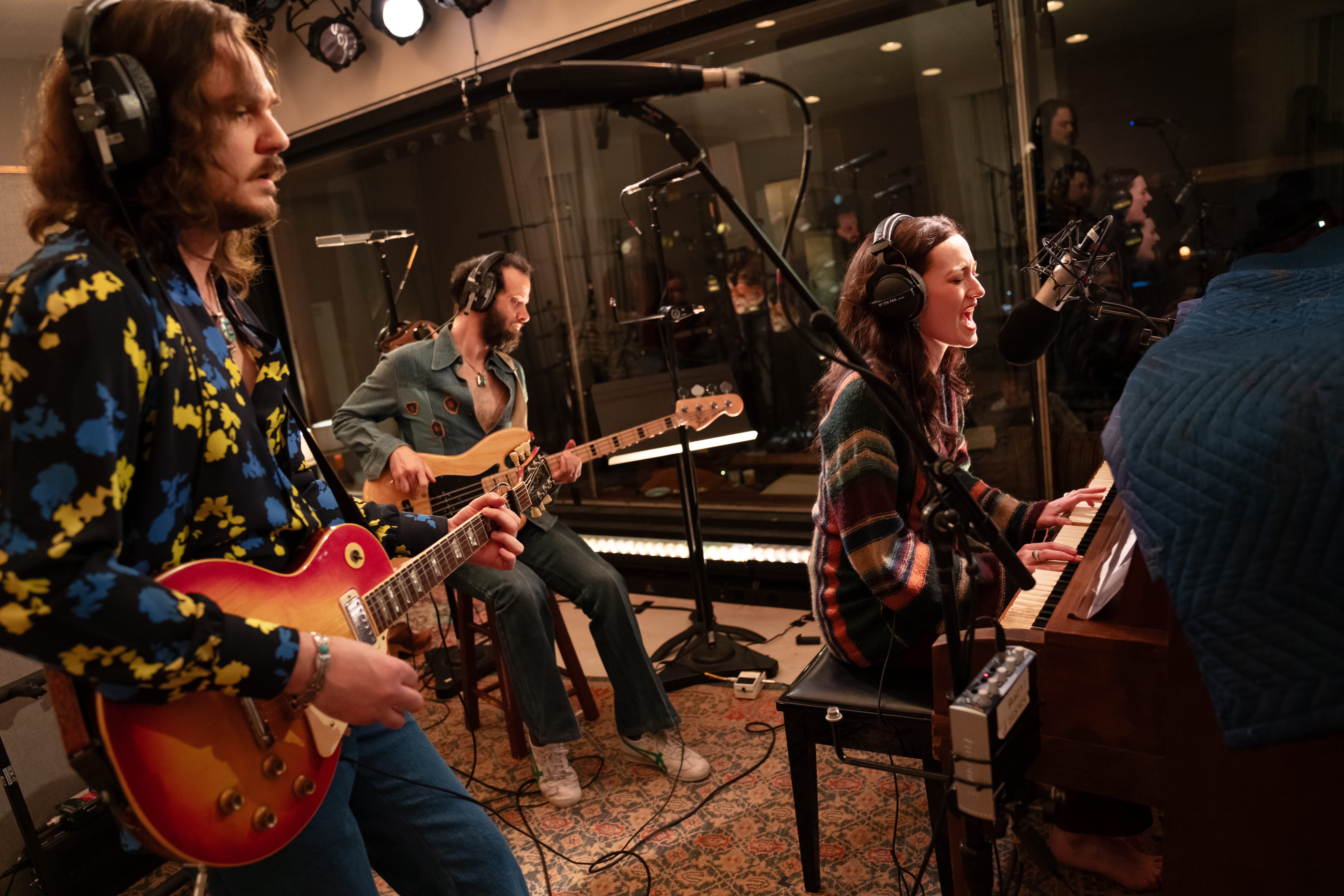It’s a Wonderful Life, The Live Radio Play at the Irish Repertory Theatre

(© Carol Rosegg)
If you’re in the market for an alternative to the avalanche of holiday productions of A Christmas Carol, look no further than the Irish Repertory Theatre‘s production of It's a Wonderful Life, The Live Radio Play. This uniquely American story about common decency and community solidarity in the face of adversity is more relevant than ever in the age of mass foreclosures and rampant unemployment. In the capable hands of director Charlotte Moore and her cast (many of whom are returning from last year’s production), it’s also a peppermint-flavored delight, full of warmth and laughter.
Based on the 1946 Frank Capra film starring Jimmy Stewart and Donna Reed, It’s a Wonderful Life, The Live Radio Play takes place in a small studio at WIRT Radio in 1946. The actors shuffle in, remove their winter coats, and pour coffee (some of it “Irished up”) in preparation for a live broadcast. For the next 70 minutes they perform an abridged version of the film script. Each actor plays multiple roles, with the exception of Howard McGilin who plays the central character of George Bailey.
An American response to A Christmas Carol, It’s a Wonderful Life is about what the world would be like without George Bailey (as opposed to showing the actual misery caused by miserly Ebenezer Scrooge). A lifelong resident of Bedford Falls, New York, George is the proprietor of the Bailey Brothers’ Building and Loan, a small business he inherited after his father suddenly passed. George was never much interested in “this business of nickels and dimes”: He wanted to travel the world and build massive public-works projects. But when the town plutocrat and slumlord Henry F. Potter (Peter Maloney) tried to run the building and loan out of business (it’s his only competition), George rose to the call of duty. Yet when his business partner Uncle Billy (Ian Holcomb) misplaces $8,000, the responsibility to avert disaster proves too much for George and he considers suicide, only to be distracted by a drowning man, Clarence (also Maloney), who just so happens to be his guardian angel. By showing George what life would be like in Bedford Falls without him (pretty crappy), Clarence proves that George’s really is a wonderful life.
Fans of the movie will undoubtedly relish mouthing along to the timeless dialogue as the actors speak it. Adapter Anthony E. Palermo has shortened the text and added some narration to compensate for the visual storytelling lost in the transfer to radio: There’s no Martini family housewarming or swimming pool Charleston. Still, the basic structure of the story is there.
Of course, since we are a live audience, this is not exactly radio theater, but more precisely radio-themed metatheater. Outside of the It’s a Wonderful Life story the actors refer to one another by their real names, although they are all playing actors from the 1940s. David Toser has designed a plethora of hats that help distinguish the characters. Set designer James Morgan has transformed the tiny downstairs W. Scott McLucas Studio Theatre into what feel like a real radio studio.
The adorable Rory Duffy steals the show as the sound artists, crunching a tiny pair of boots into a bowl of cornflakes to create the effect of walking through an upstate snowbank among other highly inventive tricks. Kristin Griffith has the widest range of the ensemble, playing crotchety old ladies and little girls (like Zuzu) with equal commitment and gusto.
You won’t regret your hour (and change) spent with this Christmastime classic, a story that seems to get better each time I hear it.











